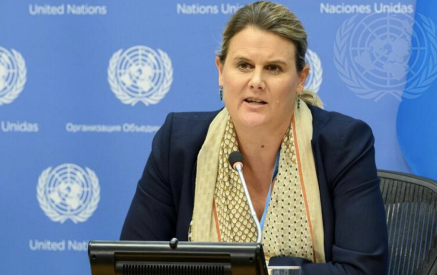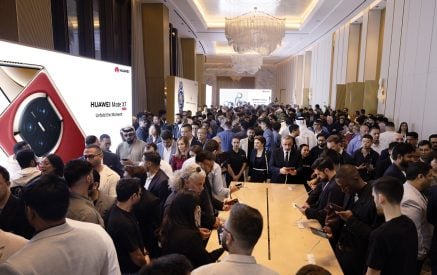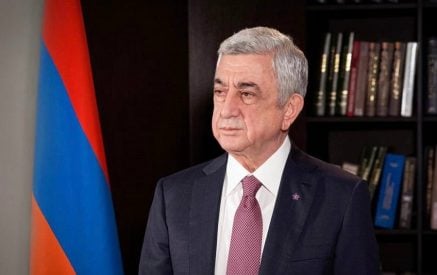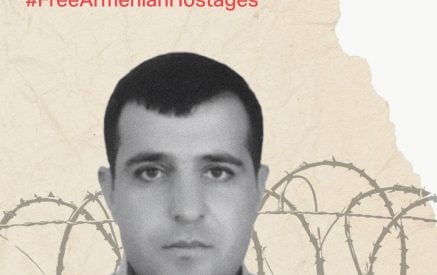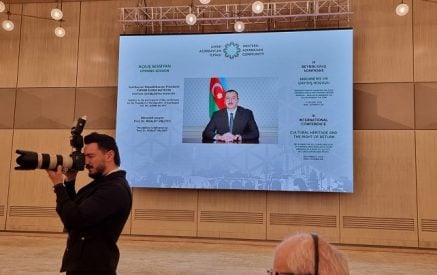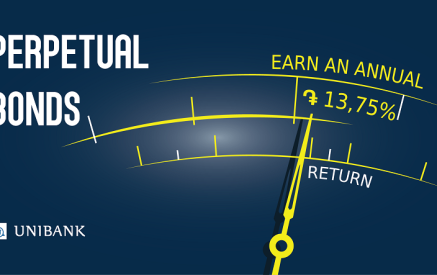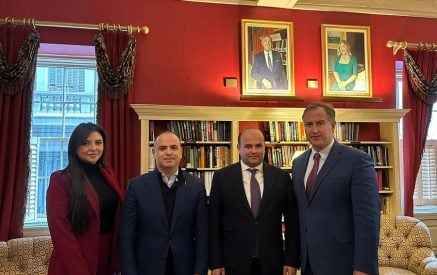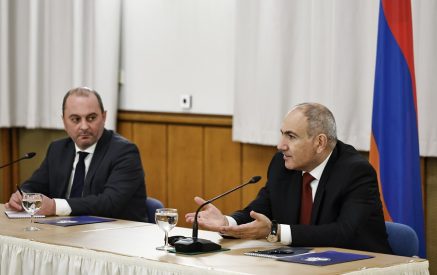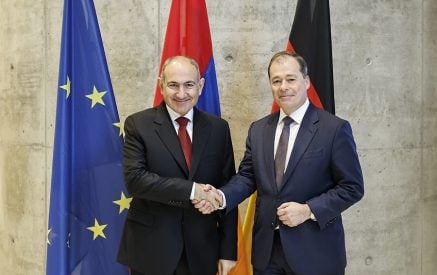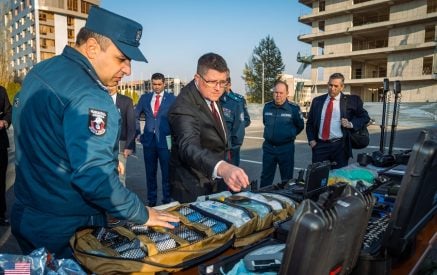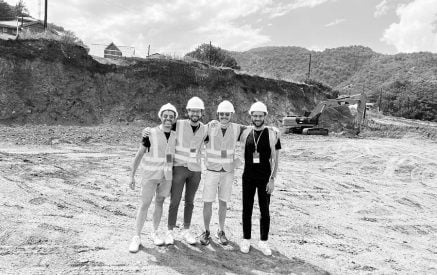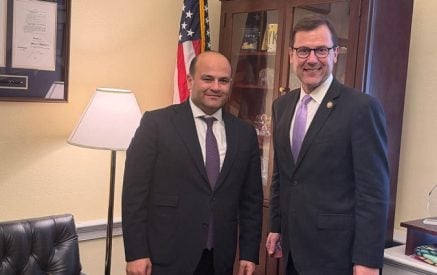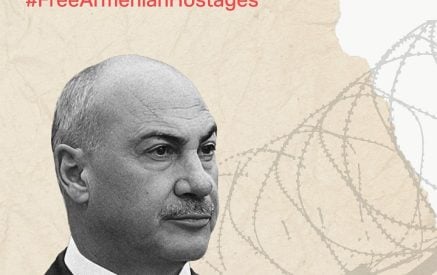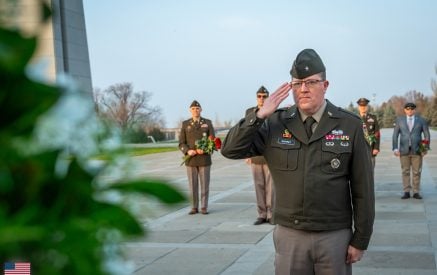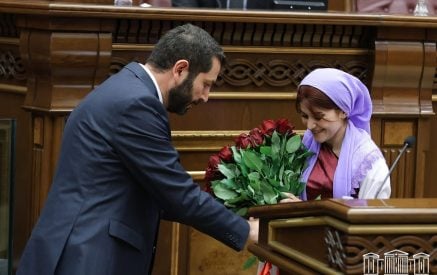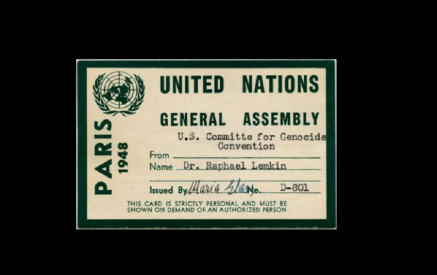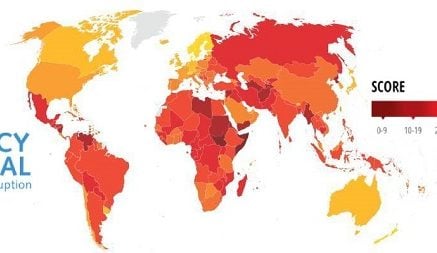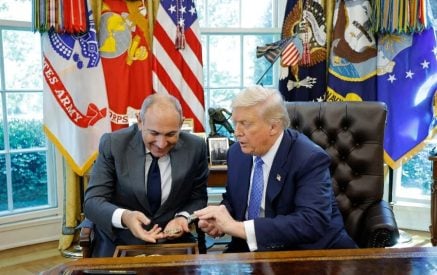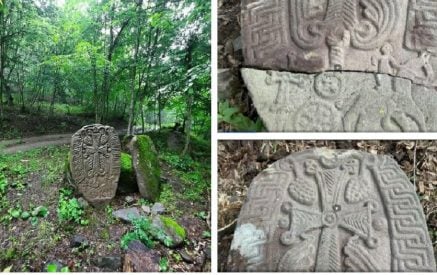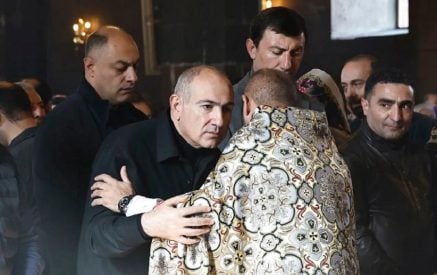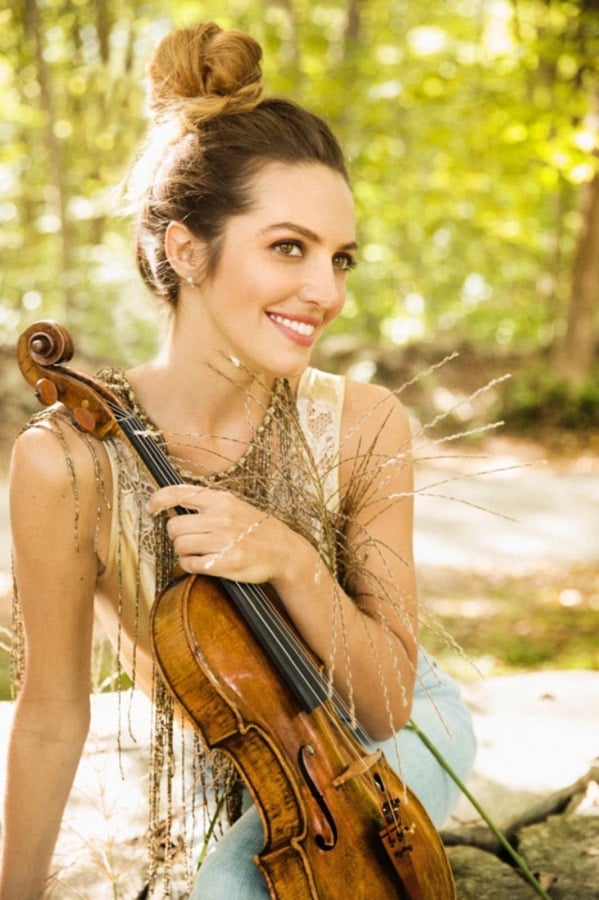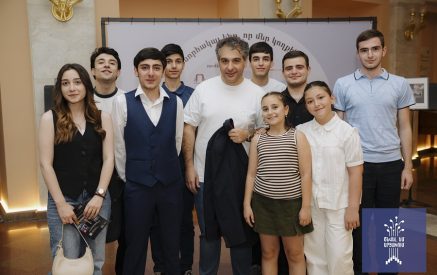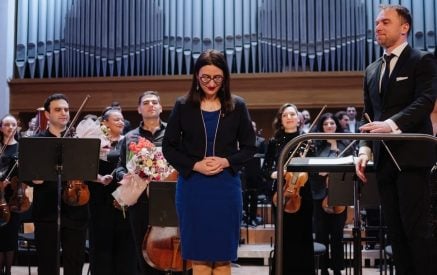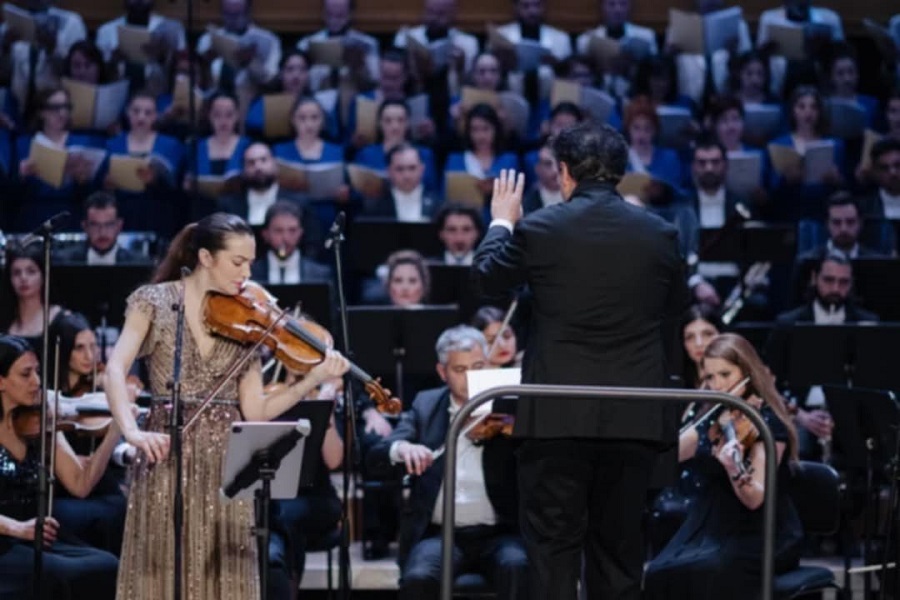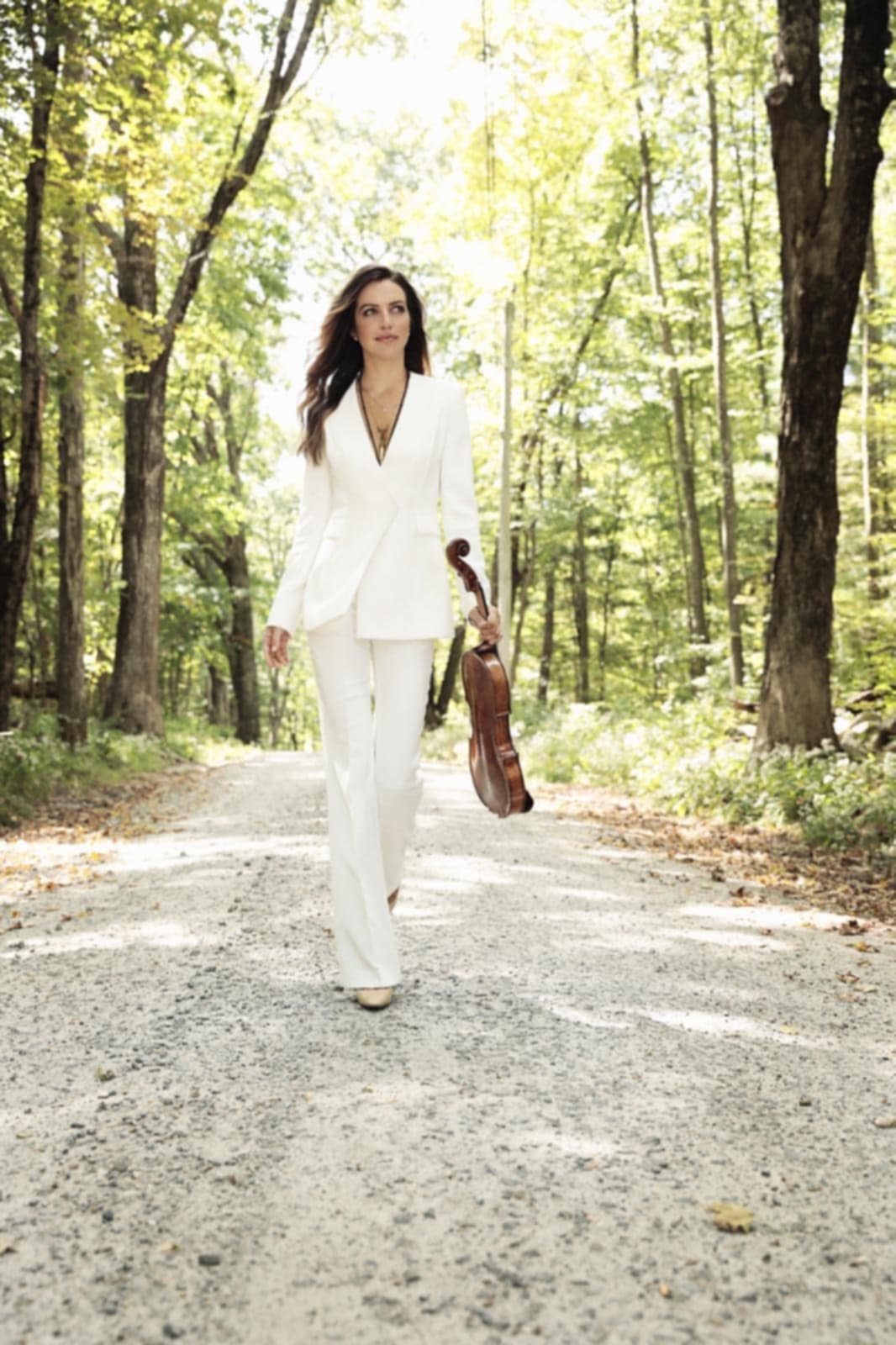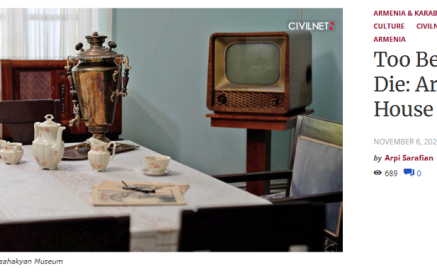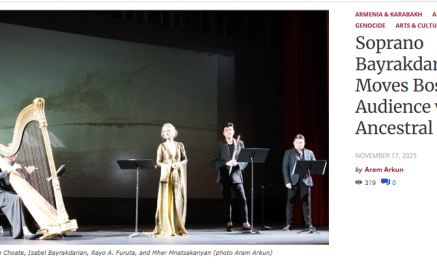by Composer Arpine Kalinina
From March 5 to 29, the 5th Penderecki Contemporary Music Festival, organized by the Armenian State Symphony Orchestra, took place in Yerevan, Armenia. The festival, the only one after the name Penderecki held outside the composer’s native Poland, is fully dedicated to the works of prominent contemporary classical composers.
As the Orchestra’s founding artistic director and principal conductor, Sergey Smbatyan notes, Penderecki’s influence on 20th/21st-century music—including orchestral music—was monumental, and the bond between the Orchestra and the Maestro’s heritage remains strong. Penderecki visited Armenia multiple times, collaborated with the Orchestra, and left a lasting impact on the Orchestra’s creative journey. Hosting a festival of this caliber in Armenia is of great significance: under Penderecki’s name, renowned musicians gather not only to perform his works but also to celebrate the broader landscape of contemporary classical music.
The 5th Penderecki Festival featured works by Krzysztof Penderecki, Francis Poulenc, Avet Terterian, Giya Kancheli, Mychael Danna, Lowell Liebermann, Alexis Alrich, and Eric Whitacre. The final concert of the Festival took place on March 29 at the Aram Khachaturian Concert Hall. The soloist for the concert was the brilliant Canadian violist and violinist Sarah McElravy, who performed Giya Kancheli’s Styx for Viola, Mixed Choir, and Orchestra.
Read also
On this occasion, I had the opportunity to speak with Sarah.
You have come to Armenia to perform at the Penderecki Contemporary Music Festival. I know that Penderecki’s music is part of your repertoire. What do you find most special about Penderecki’s music, and did you ever have the opportunity to meet or collaborate with him in person?
Penderecki’s music plays a very special role for me. I first came into contact with his music many years ago as a student in Banff, Canada, at a music center where I participated in masterclass programs every summer. One year, there was a project in which he premiered his Credo for soloists, children’s choir, mixed choir, and orchestra, and I had the opportunity to play in the orchestra. I was likely only 13 years old, and that was my first introduction to his music.
Later in life, I started playing more of his music. Very often, I performed his Double Concerto for violin, viola, and orchestra. It is hard to say what makes Penderecki’s music so special, because I think, in every period of his life, he wrote quite differently. The period of his life with which I am most familiar is his later phase. He once stated that, as he aged, he sought to write in a more beautiful and singing manner. And I see this in his Double Concerto—a heartbreaking piece, especially in the way he wrote for the viola, which is very lyrical and lush. He masterfully understood how to reach the core of the instrument and capture its character so well. It is one of my favorite pieces to perform.
The first time I performed the Double Concerto, Maestro was supposed to conduct, but unfortunately, he fell ill. However, his wife, Elżbieta, was there. Since his passing, I have become closer with her; I played at the Beethoven Easter Festival in Warsaw. I also played his Sextet, one of the great modern chamber works, at his funeral, and I performed his Ciaccona for violin and viola.
Regrettably, he never heard me play the Double Concerto.
This is your first collaboration with the Armenian State Symphony Orchestra. Could you share your experience working with the orchestra and Maestro Sergey Smbatyan? Also, please tell us about Styx for viola, mixed choir, and orchestra by Giya Kancheli — a performance that was profound, beautifully impressive, and mysterious.
I was in Armenia last September, so this is my second time here, and I am very happy to be back in Yerevan.
The Armenian State Symphony Orchestra is a legendary collective, and it was an honor and a joy to perform with them — especially on a rarely performed piece. The orchestra is incredible: very flexible, with such a beautiful sound, and so easy to work with and Maestro Smbatyan is extremely inspiring.
I first heard Styx about ten years ago in Vienna and was instantly captivated by its haunting intensity and emotional depth. Since then, I had long hoped for the opportunity to perform it — so when the invitation came from the orchestra, I knew immediately I had to make it happen.
I have also performed other works by Giya Kancheli, one of the great Georgian composers, including his string quartet Chiaroscuro. I was fortunate to meet him in Italy while performing the piece and to work with him briefly.
Styx is a profoundly moving work — a kind of Requiem — written in memory of three close friends and extraordinary musicians: Avet Terterian, Alfred Schnittke, and Giya Kancheli’s teacher, Ioseb Bardanashvili. The title refers to the mythological River Styx, which separates the worlds of the living and the dead. I have always felt that the viola in this piece occupies that very space — a bridge between two realms, constantly drawing them together and then letting them drift apart again. I was absolutely thrilled to perform it.
You have collaborated with Armenian musicians, including a recent concert with violinist and conductor Emmanuel Tjeknavorian. Have you had the opportunity to perform Armenian music, aside from your beautiful performance of Komitas’ music, which you did as an encore for this concert?
Last year, I was in Yerevan on a chamber music expedition, performing with musicians from all over, including some wonderful Armenian musicians. We also had the chance to explore the country, and it truly was a magical week. Compared to touring, chamber music festivals — especially with friends — really allow me to connect with a place. I absolutely loved my time in Armenia — its breathtaking nature, deep history, and warm spirit.
When I was younger, I performed Aram Khachaturian’s Violin Concerto. And for this concert, since I was playing a work by Giya Kancheli, I thought it would be a meaningful gesture to include Komitas as an encore — his music carries such a profound cultural and historical legacy.
I am also originally from Toronto, which has a large Armenian community. I have had the pleasure of collaborating with many Armenian friends and musicians over the years. Emmanuel Tjeknavorian is a very dear friend — we have performed together many times. I have always found it fascinating that a country with such a small population can be home to so much extraordinary talent, particularly in music. It is truly remarkable.
You are both a violinist and a violist. What are the challenges and advantages of switching between the two instruments? How often do you do it? Additionally, how do the violin and viola shape your artistic expression?
I started as a violinist, and I firmly believe that every violinist should play the viola. In some ways, the viola can be even more challenging than the violin — not necessarily because of its size, but because of the way it responds. The viola does not speak as clearly or as easily as the violin, which means you have to engage your entire body differently, especially the bow arm. But that is also part of its magic — it teaches you a new level of patience and sensitivity, and offers a depth of sound that is incredibly rewarding.
I played the violin almost exclusively until I was 30. I was the first violinist in a string quartet for many years, which is an intense life — constant rehearsing, traveling, and always living in close musical dialogue. Eventually, I felt ready for something new. When I began working seriously on the viola, I quickly realized that it is a world of its own. For the past ten years, I have dedicated myself mostly to the viola and have worked very hard to understand it fully. I was determined not to sound like a violinist playing the viola — I wanted to sound like a true violist and to really understand the instrument on its own terms.
I do have some physical attributes — like broad shoulders and long arms — that seem to suit the viola quite naturally, and perhaps that helped me feel at home on the instrument. And it has been such a joy and a gift to become familiar with the repertoire for this instrument. I truly believe I was always a violist at heart. Both instruments have their own unique challenges, and I think if you have the ability to play both, you absolutely should.
Could you tell us more about the instruments you play?
I play on an incredible Italian violin by Ferdinando Gagliano, made in 1791. And for viola, I play a Lorenzo Storioni from 1785—possibly one of the most special instruments I have ever come across. It has everything: a rich, deep C string, and the A string just soars—it sings like a violin.
Both of these instruments are kindly loaned to me by the Dkfm. Angelika Prokopp Privatstiftung Foundation in Vienna. For musicians, playing on great Italian instruments without help is nearly impossible—we simply would not have access to them otherwise. We really do rely on generous people who understand how important it is for musicians to be able to play on instruments like these. I am forever grateful to the Prokopp Foundation for making that possible.
Collaboration is an essential part of music-making, whether as a soloist with an orchestra or in a chamber ensemble. Could you share your thoughts on the significance of musical collaboration?
I think collaboration is the most important element in a musician’s education. I am often approached by young musicians asking, “How do you get management? How do you get concerts? How do you become a soloist or chamber musician?” And honestly, there is no formula. All you can really do is work very hard. But if there is one piece of advice I always give, it is to play chamber music. That is where you truly learn how to collaborate and how to listen.
It is through chamber music that you develop the skills that make you an interesting musician. You learn how to analyze a score in depth, how to understand not only your part, but what is happening around you—how all the voices fit together. That understanding becomes invaluable when you step in front of an orchestra. You are not just focused on your solo line—you are aware of the entire structure, the dialogue between sections, and how to bring everyone together.
Chamber music also teaches you how to exchange musical ideas, how to respect your colleagues, and how to navigate different perspectives. Sometimes you will disagree—and that is where the real learning happens. You figure out how to discuss those differences, how to compromise, and how to grow through the process. In a field as interconnected as classical music, that kind of communication is everything.
You were a founding member of the Linden String Quartet (2008–2014). How does playing chamber music differ from solo performance? Do you personally prefer the intimacy of chamber music or the limelight of solo playing?
My first love was chamber music—specifically, the string quartet repertoire. I loved my time with the Linden Quartet. Of course, I am also very happy that I now get to play in many different chamber music formations and quite often as a soloist, but musically, my heart is still with the string quartet. For me, the late Beethoven, Schubert, and Bartók quartets represent some of the greatest music ever written.
Being a soloist and being a quartet musician are two very different careers, and both come with their own challenges. My experience as the first violinist of a quartet taught me how incredibly demanding that role is—the repertoire is vast, and you are seated, which makes virtuosic playing even more difficult. It is a different kind of virtuosity than what is required of a soloist. Playing a concerto is very muscular—it requires strength, stamina, and focus over a long arc. In chamber music, especially quartet playing, the “fitness” is different. You have to be nimble, flexible, and constantly tuned in to everyone around you.
Playing in a string quartet has, for me, been one of the most important schools of learning. It is where you begin to understand so much about music—and about yourself. The level of transparency, the constant dialogue, the need to be both an individual and part of a collective—it all pushes you to grow in ways that few other settings do. It also teaches you how to blend color, because everything is so exposed. There is nowhere to hide.
When I play as a soloist, I try to bring those colors with me—to imitate that palette I have found in the quartet. Of course, there is less flexibility because you have to project and be heard, but I think that is one of the beautiful crossovers between chamber and solo playing.
You frequently perform with your husband, violinist and conductor Julian Rachlin, not only as a soloist but also in a duo and chamber ensemble. You have both mentioned that this partnership allows for deeper discussion and analysis of a composition over time. How does it shape your interpretation and approach to performance? Could you share insights into the unique dynamic of collaborating both musically and personally?
Julian is an incredible soloist, conductor, and musician—an immense inspiration for me. He also comes from a passionate chamber music background and this connection we share is especially meaningful. Even when we are playing chamber music, the work we both put in before meeting our colleagues is intense. We take it very seriously, with a great attention to detail and score analysis.
It is incredibly satisfying to make music with someone you truly know and love. We have been together for ten years, and day by day, our ensemble continues to grow. We talk about music even when we are not playing together—I listen to his concerts, and he listens to mine.
We are fortunate as a couple that we get along not just in life, but also as musicians. We respect each other deeply, and we truly love playing together—whether it is concertos, chamber music, or when I am his soloist. It is a joy to explore all these different musical roles with him, and I hope we continue performing together for many years to come.
In addition to performing, you also teach. In 2014, you founded the Chamber Music Society México, where you served as Artistic Director, bringing educational programs to talented young musicians in Mexico City. Do you have a particular philosophy or approach to teaching?
This is a very important question, as I remember what it felt like to be a young artist—and how daunting it can be when you decide to pursue a career in classical music. There are so many questions. For me, the most important thing is creating an environment where students feel safe to express themselves, explore, and find their voice.
Ideally, a journey in classical music is not just about early success—it is about finding a way to enjoy music and live in it for many, many years. We want to build something with young people that keeps them engaged, curious, and connected to their art for decades to come.
A big part of my teaching philosophy is this: when you leave school, that is just the beginning. In school, we work with our teachers and colleagues, but the real teaching begins when you have to teach yourself—after you have left your conservatory and your private teacher. Where do you take it from there, with yourself? That is the question. And the answer lies in staying curious, staying brave, and continuing to push yourself forward.
There will be times when you feel disappointed—perhaps in how you have prepared, or in how you have played. There will be moments that confront you with your own limits, and those are some of the most important moments of all. You begin to understand not only what you can do, but even more importantly, what you cannot do. And you also realize that those boundaries are not fixed—they are constantly shifting. That awareness is what keeps you growing.
We all need to grow, there are always new things to learn, ways to change and evolve. For example, every time I play Mozart’s Sinfonia Concertante for Violin, Viola, and Orchestra, I force myself change bowings or fingerings or how I phrase passages. It is so important to keep pushing myself to find better ways of doing things, especially in a piece that I have played many time but that never feels 100% comfortable.
Ultimately, my philosophy is to instill something that keeps students inspired for the long term. Classical music has its ups and downs—for all of us. Even the most successful musicians go through very difficult times. That is why we need that deep love and curiosity to carry us through the darker moments—especially as artists, because we feel everything so intensely.
Contemporary music plays an important role in your artistic journey. Have you collaborated with living composers, and has any composer written a piece specifically for you? What does working with a living composer bring to your musical experience?
I have worked with many living composers and am a strong advocate for new music and its importance. I often think—we would not have Mozart or Beethoven today if people in their own time had not dedicated themselves to performing and championing their work. We need to approach contemporary music with the same seriousness and a genuine effort to understand the composer and what they want to express.
When I was playing in the quartet, we were lucky enough to have had a couple commissions where we got to work intensively with living composers. We were also based at Yale University, which has a very strong composition department, and we performed a great deal of new music there.
Right now, I am working on a viola concerto written for me by Benjamin Yusupov, which is set to premiere in June. It has been a real joy to work with Mr. Yusupov over the past few months. It is such an honor to have a composer take the time to write and dedicate a piece to you.
If I have learned anything from working with living composers, it is that they want us, the performers, to find an approach that fits our technique and our sound. In contrast, we often treat Mozart or Beethoven so literally—obsessing over every dot and dynamic marking. That is not to say you should change what the composer has written, but with contemporary music, there is often a little more flexibility, more room for dialogue. Ultimately, what they want is for us to be inspired. And that, for a performer, is such a gift!
Your career is multifaceted: do you have any new musical horizons you would like to explore? I have heard that your husband once mentioned you have an exceptional ability to read scores and that conducting might be an avenue for you. Would you like to conduct?
My husband and friends keep encouraging me to conduct, but I definitely do not see myself as a conductor—though you never know! Right now, I am pleased to have such a beautiful balance. I have landed in a place in my life where I have incredible solo projects, and I play a lot of chamber music, getting to travel the world. At the moment, I am very happy with where I am, giving myself time to work and practice, and not overloading my schedule: preserving time for reflection and not always being so busy. Every project takes time and energy, and if I want to do things on the level that I expect of myself, I need to give each project that time —music needs time. We live in a world that is so fast-paced, and what we do is the complete opposite. We need time to reflect and let the music absorb, away from the instrument, not just always on the instrument. So, that is a challenge I am trying to overcome.
Do you have any particular artistic aspirations or areas of focus for the future, whether in performance, teaching, or another area?
I stepped away from teaching in recent years. I do not like the idea of dropping in, seeing someone for an hour, and then not seeing them again for a long time. It has to be a real commitment—especially when it comes to private students. I do miss it, as I did a great deal of teaching during my time with the quartet. We taught at Yale University and all over the United States and Canada.
I could definitely see myself coming back to it—really focusing on just a couple of students and giving them the time they need. I am a big believer that one hour a week is not really enough. I know that is how most university and conservatory programs work, but for talented students, I think we need to give them as much as possible—share as much information, attention, and time as we can. I suppose that would be my next goal.
Where do you draw inspiration for your creative work? Are there other forms of art or hobbies that influence your music?
I draw inspiration everywhere. I really love exploring different cultures. I am very well suited to a career where I travel frequently. To me, landing in Yerevan, walking around, and finding my favorite coffee shop, restaurant, little gallery, and bookstore is so inspiring. Wherever I am, I always try to find time to wander — without necessarily having a plan—and absorb the feeling of the city and its culture.
I love literature, I love jazz… Classical music is a very large part of my life—of course, we all have to be very dedicated—but I also make a concerted effort to explore other artistic avenues, just to allow my mind a moment of rest. It is great to learn from other art forms; maybe you do not realize it right away, but in time, you recognize how they might influence your performance, shaping you artistically.
Do you have a particular mindset or ritual before stepping onto the stage?
Usually, before playing a concert, I try to keep things in perspective. With a lot of travel and many concerts, it is easy to get overwhelmed. I always try to remember that this is about expression and enjoyment; it is not about perfection. Of course, we are always striving for perfection—we are practicing, obsessing. But right before you step up on stage, it is about releasing yourself from that chase and walking out knowing that anything can happen—and that is completely fine.
I feel like one of the luckiest people to get to stand on stage—it is such a privilege. And even though it is scary, it is something where you really need to soak in every moment and let it happen. This is the philosophy I try to bring to performance.
You perform all over the world. Where do you feel most at peace and in harmony?
I love playing everywhere; I am so curious about every place. To me, musicians are very lucky, as we get to experience the best of humanity. People come to concerts to enjoy, maybe sometimes to escape the realities of life, so wherever I travel, I happen to see the best in people. I love living in Europe, and I am very grateful to be based in Vienna. Of course, I perform all over Europe, and it is quite special to play in incredible concert halls for these dedicated audiences, especially in Germany and Austria (though, of course, there are dedicated audiences all over the world, too). China is one of my favorite places to visit (and eat, too!). In April, I am going to visit China again. It is exciting—a substantial amount of new music is programmed there to perform; they are so curious about new music.
I feel most in harmony on stage with my husband: we are very connected, both as a couple and as musicians. We have such a special musical connection, and it is wonderful to share that and travel with someone who truly understands the nature of our career. Not many people can understand the intensity of our work. So, I would say that I feel most at peace when I am at home or playing chamber music. And, of course, with my little dog, Rupert—he is the big star of the family. He is our great love, and he travels with us all over the world.
In Armenia, from March 8 to April 7, during the time you performed in Armenia, we celebrate The Month of Women, a time dedicated to beauty, spring, love, and maternity. In your view, what qualities define femininity and make women beautiful, and what does spring mean to you?
On my walk to the Aram Khachaturian Concert Hall for rehearsal from the hotel, I felt that today was quintessentially perfect spring. The trees are budding, and the flowers are blooming. There is that distinct smell when winter is over, and it smells like inspiration.
Spring is my favorite season, and it is true—it is a very feminine season. If I think of the feeling of spring and rebirth with growth, it does relate to femininity.
Being female and a woman involves so many qualities: it is both soft and strong at the same time. We embody a vast palette of emotions. For me, to be a woman is to be able to express ourselves and truly have the power and knowledge to do what we want. It is amazing to be a woman, I have to say. I also feel that we are living in a time—particularly in the classical music world, which, like many other fields, has historically been male-dominated—where things are changing. I believe we are coming to a new rebirth, a new spring, where women have more of a voice, and women composers and conductors are being recognized. I hope, and I know, that this will continue to grow, because we are an unstoppable force.



